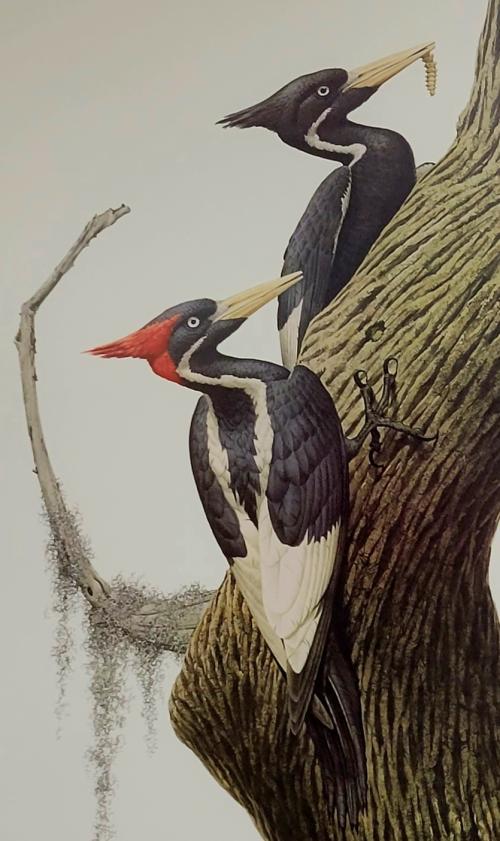Researchers Suggest Ivory-billed Woodpecker is Not Extinct
Study compiles 10-years of photos, video, audio and sighting accounts of the rare bird

A group of researchers, which includes research affiliate Dr. John Trochet with the UC Davis Museum of Wildlife and Fish Biology, has been working for the past 10 years to collect evidence that the elusive ivory-billed woodpecker is still in existence.
The ivory-billed woodpecker (Campephilus principalis) was known to live in the southern U.S., but because of habitat loss and hunting, its population drastically declined. The last agreed-upon sighting of the bird was in 1944 in Louisiana, and it was listed as an endangered species in 1967. The U.S. Fish and Wildlife Service recently recommended that the bird be removed from the Endangered Species List due to extinction and is currently accepting public comment on the matter.
A new study, published by the journal Ecology and Evolution, features a compilation of trail camera videos, photos, audio clips of bird calls and some personal accounts from the researchers who said they spotted the rare bird. With distinct calls and at times an audible double rap, the ivory-billed woodpecker is described as having black and white feathers with a white chisel-tipped beak and a pointed crest.
The researchers wrote: “Using multiple lines of evidence, the data suggest intermittent but repeated presence of multiple individual birds with field marks and behaviors consistent with those of Ivory-billed Woodpeckers” and suggests that “it is clearly premature for the species to be declared extinct.”
“We are very excited for the research team and particularly John, who has spent the better part of each year, in February and March, trying to document this elusive bird,” said Andy Engilis, curator of the Museum of Wildlife and Fish Biology. “Listing a species as extinct has a level of finality to it, and it is great that this compilation of detections casts a sizable shadow of doubt on this iconic species being extinct.”
National Aviary, a non-profit bird zoo located in Pittsburgh, has more about this research, which was led by its director of conservation and field research, Steven Latta.
Media Resources
- John Trochet, Museum of Wildlife and Fish Biology, jatrochet@ ucdavis.edu
- Andrew Engilis, Jr., Museum of Wildlife and Fish Biology, aengilisjr@ucdavis.edu
- Tiffany Dobbyn, College of Agricultural and Environmental Sciences, tadobbyn@ucdavis.edu